#infant nutrition awareness
Explore tagged Tumblr posts
Text
Jamshedpur Club Hosts Breastfeeding Awareness Program
Inner Wheel Club educates women and girls on benefits of breastfeeding at Beldih gram basti Inner Wheel Club of Jamshedpur organized an awareness program on breastfeeding benefits for women and young girls at Beldih gram basti. JAMSHEDPUR – At Beldih gram basti, the Inner Wheel Club of Jamshedpur held a lactation Week awareness event to inform women and girls about the significance of…
#आयोजन#Beldih gram basti community education#breastfeeding benefits program#Breastfeeding Week celebration#community health promotion#Event#infant nutrition awareness#Inner Wheel Club health initiative#Jamshedpur breastfeeding awareness#Jamshedpur health outreach#maternal health education#women&039;s health education Jamshedpur
0 notes
Text
Promising Study Links Breast Milk Fat to Reduced Cerebral Palsy Risk
A recent study has found an exciting link between a fat in breast milk and the potential to lower the risk of cerebral palsy in premature babies. Cerebral palsy is the most common motor disorder in children. It can cause lifelong challenges, like trouble walking, speaking, and doing everyday tasks. Researchers at Duke University discovered that this special fat may help form new cells that…
#Brain Development#Breast Milk Benefits#Cerebral Palsy#Cerebral Palsy Awareness#Child Development#Childrens Health#Duke University#Health Innovation#Healthy Babies#Infant Health#Infant Nutrition#Medical Research#Neuroscience#Pediatric Health#Premature Infants
0 notes
Text
i hope people are aware that food is like... calories. that's the biggest part that's keeping you alive. calories are the amount of net energy that can be released from breaking down the food, for example by burning it (this is how agencies determine average amount of calories in a serving). you can't magically put more calories into the food by pouring more water into the soup pot and giving more people the watered down soup. your body can tell when you're trying to trick it into believing you gave it more calories than you did because it's literally using those to keep itself alive with energy. there is no way to "stretch" these basic units of energy. you are either getting enough energy or you're not. further dividing that energy is like... basically deciding we'll all starve to death a little more slowly together instead of some people surviving and some not. some people will survive and some won't even if you serve everyone Not Enough Food because some people's bodies are more equipped to handle food scarcity for longer. for example, babies will die first because their bodies are expending an incredible amount of energy to try growing into a more durable state very quickly, and they can't even consume what's being made for everyone else. their mothers will stop lactating if they are simply fed as much Not Enough Food as everyone else and the baby will be deprived of ANY nutrition whatsoever. notably there is a food program on that list specifically aimed at feeding mothers so that they can breastfeed their children (which has not posted anything since february), but this immediately negates the point in the post about equalizing any kind of hierarchy about who gets food and who doesn't, because that program feeds, specifically, women who are currently lactating, so that they can feed their infants. it does select who will be fed enough to survive and who won't. i'm not even trying to say that there is a right or wrong way to try to help, i'm just saying i think there were some questionable sentiments in that post and that saying "donate to organizations instead of individuals because donating to a few lucky individuals isn't fair" is just kicking the can down the road so someone else can be blamed for some people winning a sadistic lottery and some people losing their lives. the imposed (and enforced) scarcity is the heart of the issue regardless of who is disseminating or receiving the scarce resources
25 notes
·
View notes
Note
feel free to not publish this if it's inflammatory/likely to cause drama, but i just haven't seen anyone speaking bout this on radblr (that doesn't mean it's not happening ofcourse). i keep seeing cases of trans women inducing lactation and "breastfeeding" babies, with the most recent high profile case involving the trans woman in question feeding (i believe) his girlfriend's baby, who he's just adopted. there's an added fetish component in his case, as he does hucow type porn on his onlyfans. so in this instance, i think it's pretty clear he's a creep - but i wouldn't assume without evidence that it's a sexual thing for every trans woman. i can't deny though, that the idea of a man putting a baby to his breast to "feed" makes me feel physically sick (and furious). there are two studies about trans women linked on wikipedia about human male lactation but both of them are about how it can be done rather than, like, whether it's good for the baby. one of the studies even notes a concern about one of the drugs used and then just...doesn't follow up at all? idk, but if it can be done safely, and the nutrition profile of the "milk" matches that of a woman, i can't really see a rational reason for my visceral disgust at the idea (beyond awareness of men's general awfulness). like maybe instead we should be encouraging all fathers to do it, to lessen the burden on mothers (like some species of bat). idk i try not to equate natural with good, and i try not to assume the worst of people, but i feel like either i'm going crazy or this is just blatant child abuse
personally i think that there needs to be research into how harmful this potentially could be on the infants before promoting it in any sense. i just find it highly worrying that people taking hormones and other drugs sometimes drugs to induce lactation specifically are like promoting themselves breastfeeding babies as if there cant possibly be health concerns for those babies. even if its absent of any fetish or gross underlying reasoning, it shouldnt be allowed nor accepted until we know that it wont somehow harm the baby, that it has similar nutrients and that those hormones & drugs wont impact the baby either.
62 notes
·
View notes
Text

Merlin facts.

The legendary mage from the tale of King Arthur, her gender got lost in the stories due to period typical sexism and her own choice to remain a secretive and shadowy figure.
Very inhuman looking. Unnatural beauty, slitted eyes, pointy ears, sharp fangs and fingernails. Her blood is of a silverly-lilac color, which translates on her flesh being gray and her skin having cold undertones, as well as a gleaming quality to it, like sunlight reflecting on water. The hyperemic areas are also lilac or purple depending on blood flow, unlike humans' that are reddish or pink. This includes her eyelids, lips, fingernails, tongue, and even her blush; it's all shades of purple. She also has scales in certain areas such as around her eyes, knuckles, chest, and collarbones, hints of her succubus ascendence rather than just any fairy. Her hair is also incredibly silky and flowy looking, iridescent under any light.
Is this inhumanity that makes her incredibly beautiful and alluring, as succubus are. Most people attracted to women find it hard to tear their eyes from her, something she uses to her advantage. She's incredibly manipulative and underhanded, cruel and yet innocent, unbothered and yet thoughtful. In everything but blood she's fully a fairy, embracing that side of her being and lacking any sense of morality or value, living only for her own amusement. She enjoys playing with the heart of men and taking and taking until there's nothing left to give, to then move on to a new one. She's cruel, a sadist, and a liar, and does everything based on how much entertainment it can provide her.
It is also due to said nature that she's unable to feel love, a concept foreign to fae. She might get infatuated sometimes and obsessed others, but something pure like love is out of her reach. She's aware of this too, but she doesn't mind it.
She has the skill to copy any physical skill she sees, a mirror like effect, and store them for later use. She fights by using Vortigern's moveset, with her staff taking the place of his spear. However, said movements are just imitations without the real power of the original user behind them.
She's extremely light and can float, a side effect of being a dream like existence. She can hover slightly above the ground and will do so over the shoulder of people she's comfortable with. She also has a tendence to blend in the backgroud when she so desires giving the impression of suddenly appearing out of nowhere. This is also aided by the fact she makes no sounds when moving, and her every movement is extremely graceful and fluid like water. She has no smell either, rather being enveloped by the fragrance of flowers she always brings.
She uses her clairvoyance to get only an outline of the way things should develop. She has no interest on every little detail on how to get there, only the bigger strokes. As such, she takes whatever paths she thinks will get the intended result, as long as said result amuses her. Still, she would rather prefer it if humanity survives, as it's her source of entertainment and nutrition, and will often aid them when in need.
As such, she aided Vortigern during his rampage simply because she thought it would be fun, but relinquished her role as his court mage once she realized if things were to go his way humanity would go extinct. Seeking Uther to aid him instead, she eventually would leave an infant Arthur with Ector and continue to serve Uther for the remaining of his reign. Uninterested on the development of the future king, she wouldn't met Arthur again until the time to pull Caliburn from the stone came.
Unsurprisingly, she's a Beast Candidate for seat IV, Cherishment, and a Juvenile Beast, if not mature simply due to her little interest for the position. The Beast of the Planet, she could fully take on the role if she so desired, but has no inclination for it. It's the same with the role of Grand Caster, which she left to King Gilgamesh instead rather than trouble herself with it.
#ok these are the bases#hmu for plotting eye emoji eye emoji#○ ° ★ . * 𝐻𝑒𝑎𝑑𝑐𝑎��𝑜𝑛𝑠.#○ ° ★ . * 𝑀𝑒𝑟𝑙𝑖𝑛.
5 notes
·
View notes
Text
Ultimate Decades Challenge
Year 1303
*TRIGGER WARNING*
Infant and child loss was not uncommon among peasant families in historical times. Unfortunately, due to various factors such as limited access to healthcare, poor living conditions, and inadequate nutrition, many families had to endure the heart-wrenching experience of losing their little ones. The emotional toll of these tragedies was immeasurable, as parents grappled with grief and the challenging realities of life. These sorrowful events serve as a somber reminder of the hardships and vulnerabilities faced by families in the past.

During the unsettling times of the Middle Ages, Bridget navigated through various hurdles in her quest for herbal remedies for the consistent illnesses that their village experienced, striving to provide the best for her beloved family. As she embraced the joy of welcoming twin blessings into the world, her heart broke when her newborn daughter, Elizabeth, succumbed to the merciless grip of smallpox. This heart-wrenching loss would forever change the course of the Stonewalls.

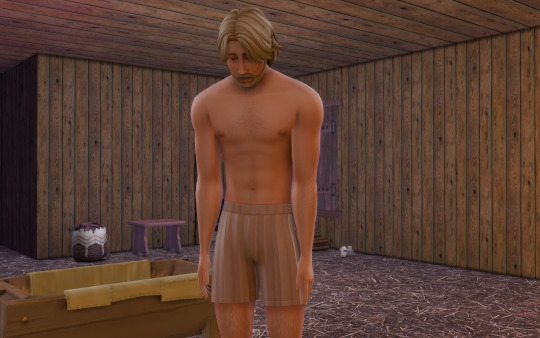
Hugh experienced immense grief after losing baby Elizabeth. The pain was beyond bearable, and his heart felt shattered. In addition to the overwhelming sadness, he had countless racing thoughts and worries. His child, Edith, had a twin sister, and he wondered about the long-term impact of this loss on her.
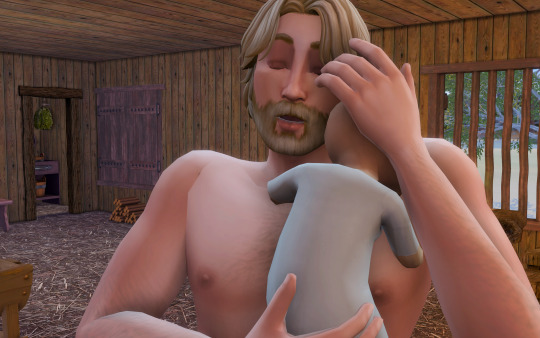

Hugh, filled with love for his family, embraced Edith tenderly, aware of their fragile state. Determined to alleviate their suffering, he embarked on a job as an Artisan's Assistant, aiming to secure a better future for his children and future generations. His unwavering dedication aimed to spare them from the hardships he himself had endured as a peasant.
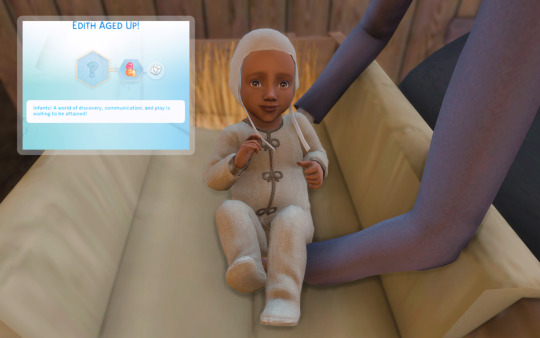
Edith Aged Up! "Infants! A world of discovery, communication, and play is waiting to be attained!" Trait (Randomized): Wiggly
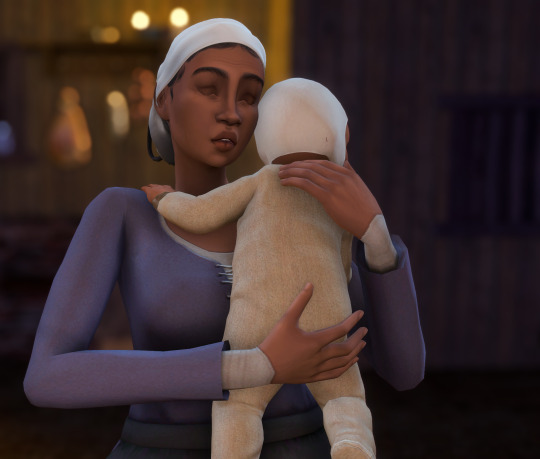

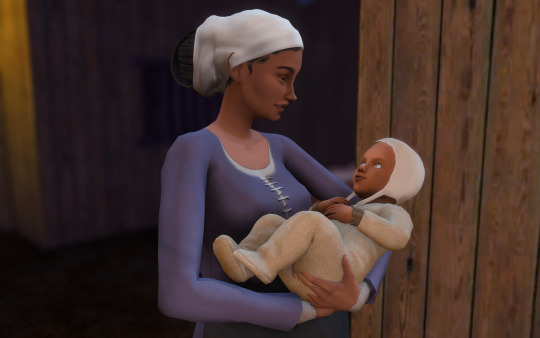
Bernedicta plays an incredibly vital role in the family's healing process, particularly during Hugh's absence due to work. Despite the challenges they face, their precious little one, Edith, is thriving and filled with contentment. Bernedicta's profound nurturing nature truly shines as she lovingly sings lullabies to her beloved grandchildren, ensuring they experience tranquil slumber.
“Lullay lullow, lullay lully, Beway bewy, lullay lullow, Lullay lully, Baw me bairne, sleep softly now. I saw a sweet and seemly sight, A blissful burd, a blossom bright, That morning made and mirth among. Lullay lullow, lullay lully, Beway bewy, lullay lullow, Lullay lully, Baw me bairne, sleep softly now. A maiden mother, meek and mild, In cradle keep, a knavë child, That softly sleep; she sat and sang. Baw me bairne, sleep softly now Lullay lullow, lullay lully, Beway bewy, lullay lullow, Lullay lully, Baw me bairne, sleep softly now.”
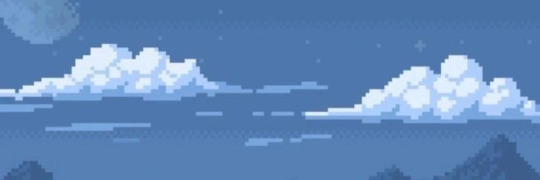
Previous / Next
#the sims 4#ts4#simblr#the sims screenshots#the sims legacy#ts4cc#sims 4#the sims gameplay#sims screenies#s4cc#ultimate decades challenge#the stonewall legacy#the stonewall family#stonewall#the sims story#legacy challenge#ts4 legacy#sims 4 gameplay#sims 4 legacy#maxis match gameplay
9 notes
·
View notes
Text
Pregnancy : Risks and Complications

Pregnancy is often depicted as a time of joy and anticipation, but it's also a period that comes with its own set of risks and potential complications. While many pregnancies proceed smoothly, it's essential for expectant parents to be aware of the various risks and complications that can arise during gestation. Understanding these factors can help individuals navigate their pregnancy journey more confidently and make informed decisions about their prenatal care. In this blog post, we'll explore some of the common risks and complications associated with high - risk pregnancy, along with preventive measures and potential treatments.
Understanding Pregnancy Risks
Pregnancy involves numerous physiological changes in a woman's body, aimed at supporting the development of a growing fetus. While these changes are natural and necessary, they can also increase the likelihood of certain health risks and complications. Some of the key factors contributing to pregnancy risks include:
Maternal Age
Advanced maternal age (typically defined as 35 years and older) is associated with an increased risk of various pregnancy complications, including gestational diabetes, preeclampsia, and chromosomal abnormalities such as Down syndrome.
Pre-existing Medical Conditions
Women with pre-existing medical conditions such as diabetes, hypertension, thyroid disorders, or autoimmune diseases may face additional challenges during pregnancy. These conditions can exacerbate pregnancy-related complications and require close monitoring by healthcare providers.
Lifestyle Factors
Smoking, alcohol consumption, substance abuse, and poor nutrition can all contribute to pregnancy risks. These factors not only affect maternal health but can also negatively impact fetal development and increase the likelihood of birth defects and other complications.
Common Pregnancy Complications
Despite advances in prenatal care, certain complications can arise during pregnancy, posing risks to both the mother and the developing baby. Some of the most common pregnancy complications include:
Gestational Diabetes
Gestational diabetes occurs when blood sugar levels rise during pregnancy, leading to potential complications such as macrosomia (large birth weight), preterm birth, and an increased risk of cesarean delivery. Proper management through diet, exercise, and medication is essential to minimize risks to both mother and baby.
Preeclampsia
Preeclampsia is a serious condition characterized by high blood pressure and signs of organ damage, typically occurring after 20 weeks of pregnancy. If left untreated, preeclampsia can lead to complications such as eclampsia (seizures), placental abruption, and maternal/fetal death. Close monitoring and prompt medical intervention are crucial for managing preeclampsia.
Preterm Labor
Preterm labor, or premature birth, refers to the onset of labor before 37 weeks of pregnancy. Premature infants may face various health challenges, including respiratory distress syndrome, developmental delays, and long-term disabilities. Identifying risk factors and receiving appropriate prenatal care can help reduce the likelihood of preterm labor.
Miscarriage
Miscarriage, or spontaneous abortion, refers to the loss of a pregnancy before 20 weeks gestation. While miscarriages are relatively common, experiencing recurrent miscarriages or late-term pregnancy loss can be emotionally devastating for couples. Understanding the potential causes of miscarriage and seeking support from healthcare providers and support groups can help individuals cope with this loss.
Birth Defects
Birth defects are structural or functional abnormalities present at birth, ranging from mild to severe. These abnormalities may result from genetic factors, environmental exposures, or a combination of both. Prenatal testing, including ultrasound scans and genetic screening, can help identify potential birth defects early in pregnancy, allowing for informed decision-making and appropriate medical management.
Preventive Measures and Prenatal Care
While it's impossible to eliminate all pregnancy risks and complications, there are several steps individuals can take to optimize their chances of a healthy pregnancy outcome:
Preconception Planning:
Planning for pregnancy involves optimizing maternal health before conception through regular exercise, a balanced diet, supplementation (e.g., folic acid), and managing pre-existing medical conditions. Consulting with a healthcare provider before conception can help identify and address potential risk factors.
Regular Prenatal Check-ups:
Attending regular prenatal appointments allows healthcare providers to monitor maternal and fetal well-being, identify any potential complications early, and provide appropriate interventions as needed. These appointments typically include physical examinations, ultrasound scans, and laboratory tests to assess maternal and fetal health.
Healthy Lifestyle Choices:
Adopting a healthy lifestyle during pregnancy, including abstaining from smoking, alcohol, and illicit drugs, maintaining a balanced diet, staying physically active (with healthcare provider approval), and managing stress, can help reduce the risk of pregnancy complications and promote optimal fetal development.
Education and Support:
Educating oneself about pregnancy, childbirth, and postpartum care can empower expectant parents to make informed decisions and advocate for their health and the health of their baby. Joining prenatal classes, seeking support from healthcare professionals, and connecting with other expectant parents can provide valuable guidance and reassurance throughout the pregnancy journey.
Conclusion
Pregnancy is a unique and transformative experience, but it's important to recognize that it comes with inherent risks and potential complications. By understanding these risks, taking proactive measures to optimize maternal health, and receiving comprehensive prenatal care, expectant parents can maximize their chances of a healthy pregnancy and childbirth. While some complications may be unavoidable, early detection, prompt intervention, and ongoing support can help mitigate their impact and ensure the best possible outcomes for both mother and baby. Remember, every pregnancy is different, and seeking guidance from healthcare professionals is crucial for personalized care and support throughout the journey to parenthood.
2 notes
·
View notes
Text
"Empowering Women in India: Challenges, Initiatives, and Solutions" - by Kanika
"Empowering Women in India: Challenges, Initiatives, and Solutions" - by Kanika
**India and the World**
The world is divided between developed and developing countries, and India, as a developing country, has a history of colonialism until gaining independence in 1947. Since then, there has been significant progress in gender trends, but it's not comparable to the advancements made in human rights, gender issues, liberty, and equality by developed nations. They are far ahead of India in these areas, and to achieve similar levels of progress, India needs to work diligently on these issues. In developed nations, women are relatively empowered due to their access to basic rights, whereas in India, women do not have the same access to these fundamental rights. "Women in India suffer significantly." This sentiment is echoed in the words of Baba Saheb Ambedkar, who said, "I measure the progress of a community by the degree of progress which women have achieved, and the condition of women in India is dire."
**The Challenges Faced by Women in India**
1. **Female Foeticide and Gender Bias:** In India, the preference for male offspring persists from rural to urban areas and across all socioeconomic levels. Female foeticide is alarmingly common, stemming from the societal belief that a male child is more valuable. This cultural bias leads to the termination of female foetuses or the tragic killing of female infants soon after birth. Economic burdens, particularly related to education and marriage, fuel this mindset, as marrying outside one's caste is often perceived as a threat to family status.
2. **Societal Expectations and Sacrifices:** Indian society conditions women from a young age to be sacrificial and tolerant. Girls often sacrifice their education for household chores and caring for siblings. Even in educated households, the burden of domestic responsibilities is placed upon girls. This ingrained notion mandates that girls manage household chores before attending school, perpetuating the idea that these responsibilities primarily belong to females.
3. **Nutritional Challenges:** A significant portion of women in India lacks access to proper nutrition. The UN Women's recent report highlights that over 70% of women in India suffer from undernourishment, leading to health complications. Malnutrition affects their ability to study, engage in activities, and, in severe cases, results in early mortality. Poverty-stricken families, especially those discouraging female education, exacerbate this cycle of deprivation, leading to a lack of education, unemployment, inadequate nutrition, and ultimately, a lack of support for future generations of women.
4. **Limited Education Access:** When deprived of education, women lack awareness of their rights and suffer in arranged marriages, often regardless of the groom's age or suitability.
5. **Restricted Professional Lives:** Early marriages hinder women from pursuing professional careers. Their societal obligation to bear children significantly limits their professional growth and personal aspirations.
6. **Victims of Violence:** Women often endure physical and mental abuse from husbands and in-laws, adding to their already challenging lives.
7. **Menstrual Hygiene Concerns:** Menstrual hygiene remains a significantly under-discussed issue. Poor women, lacking access to sanitary pads, resort to unhygienic alternatives like cloth, risking infections. This lack of proper hygiene hampers their education and participation in society.
**Empowerment of Women**
1. **Education as Empowerment:** Education serves as a fundamental right rather than a privilege. It empowers women, altering societal mindsets and providing them with opportunities.
2. **Encouraging Love Marriages:** Encouraging love marriages over arranged unions grants women autonomy and a voice in their marital future, reducing the perception of being treated as property after marriage.
3. **Involvement in Extracurricular Activities:** Encouraging girls' participation in extracurricular and sports activities promotes physical fitness and broader skill development.
**Government Initiatives for Empowerment**
1. **Women's Reservation Bill:** The introduction of a 33% reservation for women in legislative bodies ensures women's voices in policy-making, addressing women-centric issues effectively.
2. **Free Services:** Free bus services, like those provided by the Delhi government, ensure greater female presence in public spaces, enhancing safety.
3. **Free Education and Nutritional Support:** Free education and mid-day meals fulfill educational and nutritional needs, particularly for underprivileged girls.
4. **Self-Defense Training:** Implementing self-defense training in educational institutions and across various platforms prepares women to handle diverse circumstances confidently.
5. **Ujjwala Yojana:** Providing LPG cylinders to households, primarily benefiting women who face health issues while cooking on traditional stoves.
6. **Access to Menstrual Hygiene Products:** Mandating the provision of free sanitary pads to all women, regardless of economic status, can greatly impact their health and participation in various activities.
7. **Job and Educational Reservations:** Instituting reservations for women in jobs and educational institutions could significantly contribute to their empowerment.
NGOs like "Hamari Pahchan" actively work to empower women through initiatives such as providing sanitary pads, education, legal aid, and imparting entrepreneurial skills, aiming for women's financial independence. This organization was founded post the Nirbhaya incident, dedicated to making public spaces safer for women.
3 notes
·
View notes
Text
Breastfeeding Myths and Facts: Separating Fiction from Reality

A wonderful and natural method to nourish your baby is breastfeeding. It gives your baby all the nutrients they need for healthy growth and development. Breastfeeding not only delivers the best nutrition for the infant, but it also has many other advantages for the mother.
Breastfeeding��for the baby can help strengthen their immune system, lower their risk of illnesses, and minimise their risk of SIDS (sudden infant death syndrome). Additionally, breastfeeding fosters a close link between mother and child by providing safety and comfort to your infant.
Breastfeeding can help moms lose weight, cut their risk of postpartum depression, and lower their risk of developing certain cancers. Additionally, nursing generates hormones that facilitate bonding and relaxation, making it a wonderful method to establish a connection with your child.

Along with the beautiful journey of breastfeeding, it comes along with lots of myths and misconceptions. Many mothers are not even aware of the reality of these myths.
Breastfeeding is easy: It’s not easy to breastfeed a baby because a mother needs practical support with positioning the baby so that the baby can latch. Breastfeeding takes time and practice for both mothers and babies and is also time intensive, so mothers need space and support at home and work.
Mothers should only eat plain food while breastfeeding: breastfeeding mothers should need to eat a balanced diet. There is no need to change food habits unless the doctor suggests it.
You should separate the newborn baby and mother so that she can take rest: Doctors, nurses, and midwives encourage the practice of skin-to-skin contact immediately after the birth. Bringing the baby to direct contact with the mother helps to establish breastfeeding.
Mothers shouldn’t breastfeed if sick: Mothers can typically continue nursing when unwell, depending on the disease. You must ensure that you receive the proper care and enough rest, good nutrition, and hydration. Often, the antibodies your body produces to combat your sickness or illness will be passed on to your baby, helping him or her to develop their defences.
It’s hard to wean the baby if mothers breastfeed for more than a year: There is evidence that nursing for up to two years is advantageous for both women and children, but there is no proof that stopping breastfeeding beyond one year is more complicated. Since every mother and baby are unique, they must decide jointly how long to nurse.
Breastfeeding is a journey for mothers and babies that is both challenging and rewarding. In today’s generation, too many households believe in such myths and probably there is no one to debunk them. Filaantro along with Child Help Foundation has helped breastfeeding mothers understand the benefits of breastfeeding, the myths, and the facts. The organization has also established 18 Baby Feeding Centres in Pan India at hospitals, temples, and railway stations. Through this initiative, 56,615 beneficiaries have benefitted. Thus, helping mothers with a safe and secure haven to comfortably breastfeed their babies.
#filaantro#crowdfunding#fundraising#charity#education#donations#nonprofits#raise funds#donate#volunteering#world breastfeeding week#breastfeeding#breastfeeding tips#breastfeeding moms
1 note
·
View note
Text
i know the running joke of business majors is hilarious but going into my fourth year of my degree - studying business made me realise how fucked everything is, too. you just have to pretend that you don’t see how sometimes for the sake of a grade. you will be asked to write a paper on nestle or some shit and in the process of researching you will casually find they murdered 10 million infants in developing countries because of false nutritional advice just so they could sell powdered milk. but i suppose you are being asked about how they donate to charity and their corporate social responsibility efforts so who cares really!!! look at how high their profits were this year!!! (and don’t get me started on the damn circle jerk all male business professors have going on for elon musk and their obliviousness for how terrible everything surrounding him is)
taking business while being aware of the psychological and sociological affects of practice is fucking horrendous and made me highly anti-corporation and anti-consumerist.
sorry for making this funny post kinda serious and i don’t want to be a bore! but i haven’t really seen anyone talk about this because so many business majors truly do not care that business, at its core, is looking at human beings as numbers and realising that the world revolves around that fact.
the universal college experience, no matter your major, is learning how remarkably fucked everything is. except business majors theyre having a great time learning to do basic arithmetic and and staring at that one supply and demand graph where the line goes up
61K notes
·
View notes
Text
Jayesh Saini’s Vision for Health: Empowering Communities Across Kenya

Jayesh Saini
In Kenya, access to quality healthcare remains a challenge, especially in rural and underserved areas. Jayesh Saini, a prominent leader in the healthcare sector, has been working tirelessly to address these challenges and improve the health outcomes of local communities. Through his leadership at LifeCare Hospitals, Bliss Healthcare, and several public health programs, Saini is empowering communities by enhancing healthcare access, education, and services throughout the country.
Enhancing Vaccination Access in Remote Areas
Vaccinations are a crucial tool for preventing diseases, but many areas in Kenya, particularly rural regions, lack adequate access to immunization services. Jayesh Saini has spearheaded large-scale vaccination campaigns that focus on reaching these underserved areas. By collaborating with local healthcare workers and government agencies, Saini ensures that children and adults in remote communities receive the vaccinations necessary to protect them from deadly diseases such as polio, measles, and pneumonia.
In addition to direct immunization efforts, Saini’s initiatives include community outreach programs designed to raise awareness about the importance of vaccination. These educational efforts have been instrumental in increasing vaccine acceptance and combating misinformation in hard-to-reach communities.
Promoting Health Education in Local Communities
Beyond medical care, health education is a critical aspect of improving public health. Recognizing this, Jayesh Saini has placed a strong emphasis on health education across Kenya. Through community workshops, seminars, and outreach initiatives, Saini has provided valuable information on topics like hygiene, nutrition, disease prevention, maternal and child health, and mental health awareness.
These educational programs are especially vital in rural areas, where health information is often scarce. By giving people the tools to make informed decisions about their health, Saini’s initiatives are helping reduce the incidence of preventable diseases, promote healthy lifestyles, and foster greater health literacy across communities.
Improving Maternal and Child Health
Maternal and child health is a key priority for Jayesh Saini, especially given the high rates of maternal and infant mortality in Kenya. Saini’s public health programs are focused on improving the health of mothers and children by providing prenatal and postnatal care, as well as health education and nutritional support.
Additionally, Saini has introduced programs that increase access to family planning services and reproductive health education. These efforts have helped reduce unintended pregnancies and improve maternal health outcomes. By educating families about proper child nutrition, Saini’s programs also address malnutrition, a critical factor in children’s long-term health and development.
Expanding Access to Healthcare with Mobile Clinics
One of the most innovative aspects of Jayesh Saini’s public health initiatives is the introduction of mobile healthcare clinics. These mobile units travel to rural and remote areas where healthcare facilities are limited or nonexistent, providing essential services such as routine check-ups, vaccinations, disease screenings, and health education.
These mobile clinics play a vital role in ensuring that people in hard-to-reach areas receive healthcare without having to travel long distances to access a medical facility. By bringing healthcare directly to communities, the mobile clinics are improving access to medical services and facilitating early disease detection and prevention.
Empowering Healthcare Workers
A skilled and motivated healthcare workforce is essential for the success of public health programs. Jayesh Saini has focused on building and empowering Kenya’s healthcare workforce through continuous training and professional development. His institutions, such as LifeCare Hospitals, offer ongoing education and training for doctors, nurses, and community health workers, ensuring they are equipped to handle the unique healthcare challenges of rural and underserved populations.
By investing in the development of healthcare professionals, Saini is contributing to the creation of a well-trained, compassionate workforce that can deliver high-quality care to those who need it most.
Tackling Healthcare Inequities
A cornerstone of Jayesh Saini’s work is his commitment to reducing healthcare disparities. In Kenya, many people in rural areas or impoverished communities face significant barriers to accessing healthcare due to poverty, lack of education, and geographic isolation. Saini’s initiatives are designed to eliminate these barriers by bringing healthcare services directly to underserved communities.
Through mobile clinics, vaccination campaigns, health education, and the development of local healthcare infrastructure, Saini is helping create a more equitable healthcare system in Kenya. His work focuses on ensuring that all individuals, regardless of their socio-economic status or location, have access to essential healthcare services.
Read more At: https://kenyanchronicles.com/jayesh-saini-lifecare-group/
0 notes
Text
Jayesh Saini’s Public Health Leadership: Empowering Communities Across Kenya

Access to quality healthcare remains a challenge for many communities in Kenya, particularly in rural and underserved areas. Jayesh Saini, a visionary leader in the healthcare sector, has dedicated himself to transforming healthcare access across the country. Through his leadership at LifeCare Hospitals, Bliss Healthcare, and a variety of public health programs, Saini is playing a pivotal role in improving healthcare delivery and education for communities in need.
Improving Vaccination Access in Underserved Areas
Vaccinations are one of the most effective ways to prevent the spread of diseases, but in Kenya, many communities, especially in rural regions, have limited access to vaccines. Jayesh Saini has made it a priority to bridge this gap by organizing extensive vaccination campaigns. These initiatives, often conducted in collaboration with local healthcare workers and government agencies, have focused on reaching remote areas where healthcare services are minimal.
Saini’s vaccination programs have helped protect communities from diseases like polio, measles, and pneumonia, which are preventable with proper immunization. Alongside the vaccination efforts, he has led awareness campaigns to educate the public on the importance of vaccinations, helping to dispel myths and increase acceptance among local populations.
Advancing Community Health Education
Public health is not only about providing medical care—it’s also about empowering individuals with the knowledge to make informed health decisions. Jayesh Saini has prioritized health education as a key part of his initiatives. Through workshops, seminars, and outreach efforts, he has provided communities with crucial information on topics such as nutrition, hygiene, maternal and child health, and the prevention of infectious diseases.
These health education programs are especially vital in rural areas where access to health information is limited. By educating people about simple yet effective practices, Saini’s initiatives are helping communities adopt healthier lifestyles and reduce the incidence of preventable diseases. He has also expanded his focus to include mental health education, working to reduce the stigma surrounding mental health and encouraging individuals to seek support when needed.
Focusing on Maternal and Child Health
Maternal and child health are among the most pressing healthcare concerns in Kenya, with high rates of maternal and infant mortality in underserved areas. Jayesh Saini’s initiatives are focused on improving the health of mothers and children through a range of services. These include prenatal and postnatal care, health education, and nutrition programs that aim to ensure healthier pregnancies and better early-life outcomes for children.
In addition to direct healthcare, Saini’s programs also provide family planning education and access to reproductive health services. By educating families about birth spacing and offering access to contraceptive methods, Saini’s initiatives are helping to improve maternal health and reduce unintended pregnancies. His work also focuses on improving child nutrition, helping to combat malnutrition and related developmental challenges.
Bringing Healthcare to Remote Areas with Mobile Clinics
To address the challenge of healthcare access in remote parts of Kenya, Jayesh Saini has introduced mobile healthcare clinics. These clinics travel to underserved regions where healthcare infrastructure is lacking, providing essential services such as routine check-ups, vaccinations, disease screenings, and health education. Equipped with the necessary medical tools and staffed by trained professionals, the mobile clinics have become an invaluable resource for communities that would otherwise have to travel long distances to access healthcare.
The mobile clinics have proven particularly effective in rural areas, where healthcare facilities are few and far between. By bringing healthcare directly to people’s doorsteps, these clinics are not only improving access to care but also promoting health awareness and early disease detection.
Strengthening the Healthcare Workforce
For healthcare initiatives to succeed, a well-trained and motivated workforce is essential. Jayesh Saini has placed great emphasis on training and empowering healthcare professionals in Kenya. Through LifeCare Hospitals and other institutions, Saini provides continuous training for doctors, nurses, and community health workers, ensuring they are equipped with the skills and knowledge to serve underserved populations effectively.
By investing in the professional development of healthcare workers, Saini is contributing to a more skilled and compassionate healthcare workforce. This, in turn, improves the quality of care provided to communities and ensures that healthcare workers are prepared to address the specific challenges faced by rural populations.
Promoting Healthcare Equity Across Kenya
At the heart of Jayesh Saini’s efforts is a commitment to healthcare equity. In Kenya, many people are deprived of essential healthcare services due to factors such as poverty, lack of education, and geographic isolation. Saini’s initiatives are designed to ensure that all individuals, regardless of their socio-economic status or location, have access to quality healthcare.
Saini’s programs work to eliminate barriers to healthcare access by bringing services directly to the communities that need them most. Whether through mobile clinics, vaccination drives, or health education, Saini’s efforts are making healthcare more accessible and equitable across Kenya, especially for marginalized groups in rural areas.
Conclusion: A Legacy of Transforming Healthcare in Kenya
Jayesh Saini’s public health initiatives have had a profound and lasting impact on Kenya’s healthcare system. Through vaccination campaigns, health education programs, maternal and child health services, mobile healthcare clinics, and the development of healthcare professionals, Saini is ensuring that underserved communities across the country receive the care and support they need.
His commitment to improving healthcare access, promoting health education, and addressing healthcare disparities is helping to create a healthier, more equitable future for Kenya. Through visionary leadership and innovative solutions, Jayesh Saini is making a lasting difference in the lives of millions of Kenyans, particularly those who have historically been left behind by the healthcare system.
Read more At: https://blissmedicalcentre.com/press-release
0 notes
Text
Public Health for the People: Jayesh Saini’s Empowering Impact Across Kenya

In Kenya, access to quality healthcare remains a challenge, particularly in underserved communities. Jayesh Saini, a dynamic leader in the healthcare sector, has made it his mission to improve public health in the country. Through his leadership at LifeCare Hospitals, Bliss Healthcare, and various public health initiatives, Saini is making a significant difference in providing communities with better healthcare access, education, and essential resources.
Expanding Vaccination Programs in Remote Regions
Vaccination is a vital tool for preventing diseases, especially in countries like Kenya where healthcare infrastructure can be limited. Jayesh Saini has been at the forefront of vaccination initiatives, especially in rural and remote areas where healthcare services are scarce. Through partnerships with local healthcare providers and government organizations, Saini has led large-scale vaccination drives aimed at ensuring children and adults in underserved communities receive critical immunizations.
These efforts have made a noticeable impact in reducing the prevalence of preventable diseases like polio, measles, and pneumonia. In addition to the vaccination campaigns, Saini also leads awareness programs to educate communities on the importance of immunization, addressing myths and misconceptions to increase vaccine acceptance.
Empowering Communities through Health Education
Health education is fundamental to long-term health improvements, and Jayesh Saini has made it a key focus of his initiatives. By conducting workshops, health seminars, and outreach programs, Saini aims to educate communities on essential health topics such as hygiene, nutrition, maternal and child health, and the prevention of infectious diseases.
These education programs have been particularly effective in rural areas, where there is often limited access to reliable health information. By providing communities with knowledge, Saini’s initiatives help people make informed choices, leading to healthier lifestyles and fewer preventable illnesses. His focus on mental health awareness is also breaking down stigmas, encouraging individuals to seek the care they need for mental health issues.
Enhancing Maternal and Child Health
Maternal and child health remains a significant concern in Kenya, where maternal and infant mortality rates are still high. Jayesh Saini has focused much of his efforts on improving outcomes for mothers and children in underserved areas. His initiatives provide prenatal and postnatal care, health education, and nutritional support, contributing to better health for both mothers and children.
In addition, Saini has worked to increase access to family planning services and reproductive health education, empowering families to make informed decisions about their health and family size. His programs also address child nutrition, helping reduce malnutrition and ensuring that children get the proper nutrients needed for healthy development.
Mobile Clinics: Taking Healthcare to Remote Areas
One of the standout features of Jayesh Saini’s public health approach has been the introduction of mobile healthcare clinics. These mobile units provide healthcare services in rural and isolated areas where permanent healthcare facilities are unavailable. Equipped with essential medical tools and staffed by healthcare professionals, the mobile clinics offer a wide range of services, including check-ups, vaccinations, screenings, and health education.
These mobile units have proven to be a game-changer, enabling healthcare access for communities that would otherwise struggle to reach a healthcare facility. By bringing essential services directly to people, the mobile clinics help with early disease detection, prevention, and overall health education.
Strengthening the Healthcare Workforce
A strong healthcare workforce is critical for the success of public health initiatives, and Jayesh Saini has made significant investments in training healthcare professionals. Through LifeCare Hospitals and other institutions, Saini ensures that doctors, nurses, and community health workers receive continuous training on both clinical skills and public health strategies.
By empowering healthcare workers with knowledge and resources, Saini is improving the quality of care provided in underserved communities. His efforts have helped build a healthcare workforce that is not only highly skilled but also passionate about delivering compassionate care to those who need it the most.
Tackling Health Inequities and Promoting Equality
Jayesh Saini’s public health efforts are deeply rooted in the belief that everyone deserves access to quality healthcare, regardless of their background or location. In Kenya, many people in rural or impoverished areas face significant barriers to healthcare, including poverty, lack of education, and geographical isolation. Saini’s programs aim to tackle these inequities by delivering healthcare services directly to underserved communities.
By focusing on healthcare access for marginalized populations, Saini is helping reduce the disparities that often prevent people from receiving the care they need. His work is creating a more equitable healthcare system in Kenya, where quality healthcare is accessible to all, regardless of socio-economic status or geographic location.
Conclusion: A Vision for a Healthier Future
Jayesh Saini’s public health initiatives have left a lasting impact on Kenya’s healthcare landscape. Through efforts such as vaccination drives, community health education, maternal and child health programs, mobile clinics, and workforce development, Saini has improved healthcare access and outcomes across the country.
His visionary leadership continues to shape a more inclusive, equitable healthcare system in Kenya. By focusing on prevention, education, and expanding access to care, Jayesh Saini is helping to ensure a healthier future for all Kenyans, particularly those in underserved areas who need it most.
Read more At: https://wcrcint.com/leading-healthcare-frontiers-jayesh-umesh-sainis-impact-in-kenya/
0 notes
Text
Omega 3 Ingredients: Expected Growth from $3.9B to $7.5B by 2034 🐟📈
Omega-3 Ingredients Market is forecasted to grow from $3.9 billion in 2024 to $7.5 billion by 2034, with a CAGR of 6.5%. This market covers the production and distribution of essential fatty acids from marine and plant sources, which are crucial for health. Omega-3s are widely used in dietary supplements, functional foods, pharmaceuticals, and infant nutrition. The growing consumer awareness of their health benefits, such as cardiovascular support and improved cognitive function, is driving market expansion. Innovations in extraction methods and sustainable sourcing are also boosting growth.
To Request Sample Report: https://www.globalinsightservices.com/request-sample/?id=GIS10679 &utm_source=SnehaPatil&utm_medium=Article
Dietary supplements represent the largest segment, with pharmaceutical applications following closely due to omega-3’s impact on heart health. North America leads the market, driven by high consumer awareness and advanced healthcare systems. Europe follows, propelled by strong regulatory frameworks and a shift towards preventive healthcare. Meanwhile, Asia-Pacific is experiencing rapid growth, fueled by rising incomes and growing health consciousness in countries like China and India.
In 2023, the market volume was approximately 120,000 metric tons, with expectations to increase to 200,000 metric tons by 2033. The fish oil segment holds the largest market share at 55%, followed by algae oil at 30% and krill oil at 15%. Leading companies such as DSM, BASF SE, and Croda International Plc are shaping the competitive landscape, with a focus on sustainable sourcing and product innovation.
The Omega-3 Ingredients Market is poised for continued growth, with opportunities in plant-based alternatives and personalized nutrition. However, challenges like fluctuating raw material prices and environmental regulations remain key concerns.
#Omega3 #HealthSupplements #SustainableSourcing #CardiovascularHealth #CognitiveFunction #MarineIngredients #PlantBasedOmega3 #FunctionalFoods #HealthAndWellness #Nutraceuticals #FishOil #AlgaeOil #PersonalizedNutrition #DietarySupplements #HealthyLiving
0 notes
Text
Omega 3 Ingredients Market on the Rise: $3.9B to $7.5B by 2034 🌊
Omega-3 Ingredients Market is set to grow from $3.9 billion in 2024 to $7.5 billion by 2034, at a CAGR of 6.5%, driven by increasing consumer awareness of heart, brain, and joint health benefits. Omega-3 fatty acids, sourced from marine (fish, krill, algae) and plant-based (flaxseed) origins, are integral to pharmaceuticals, functional foods, dietary supplements, and infant nutrition.
To Request Sample Report: https://www.globalinsightservices.com/request-sample/?id=GIS10679 &utm_source=SnehaPatil&utm_medium=Article
Key Market Trends & Drivers
🔹 Rising Demand for Dietary Supplements — Consumers prioritize cardiovascular support, cognitive function, and anti-inflammatory benefits, fueling supplement adoption. 🔹 Sustainable Sourcing & Plant-Based Alternatives — Algae-derived omega-3 is gaining traction as a vegan-friendly, sustainable alternative to fish oil. 🔹 Technological Advancements in Extraction — Supercritical fluid extraction and molecular distillation enhance purity and efficiency. 🔹 Expanding Functional Food & Beverage Applications — Omega-3 is now incorporated into fortified dairy, beverages, and infant nutrition, expanding its market footprint. 🔹 Regulatory Push for Health & Safety Standards — Stringent FDA and EFSA guidelines ensure product quality, boosting consumer trust.
Regional Market Outlook
📌 North America leads, driven by high awareness, advanced R&D, and strong consumer demand. 📌 Europe follows, with Germany and the UK leading in preventive healthcare adoption. 📌 Asia-Pacific is the fastest-growing region, fueled by rising disposable incomes and health-conscious populations in China and India.
Market Leaders & Competitive Landscape
🏆 DSM, BASF SE, Croda International dominate, focusing on algae-based innovations and fish oil refining.
With the increasing demand for clean-label, sustainable omega-3 solutions, the industry is poised for dynamic growth and innovation.
#Omega3 #HealthSupplements #BrainHealth #HeartHealth #SustainableOmega3 #AlgaeOil #FishOil #KrillOil #Nutraceuticals #FunctionalFood #PharmaInnovation #WellnessTrends #HealthyLiving #Superfoods #VeganOmega3 #PlantBased #AntiInflammatory #CardiovascularHealth #JointSupport #DHAEPA
0 notes
Text
Feeding Bottle Market (2025-2032)

The feeding bottle market is growing due to rising demand for baby care products, increasing awareness of infant nutrition, and innovations in BPA-free and anti-colic designs.
🔑 Key Players:
🍼 Philips Avent
🏭 Pigeon Corporation
🏢 Medela AG
⚙️ Dr. Brown’s
🌍 NUK (Newell Brands)
📖 Explore Insights: Feeding Bottle Market Report
0 notes